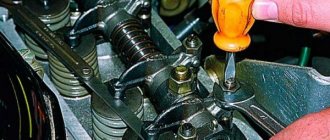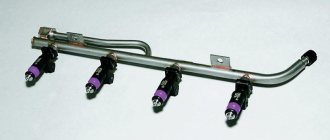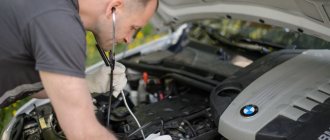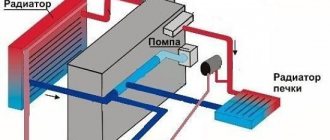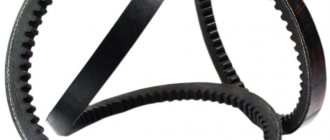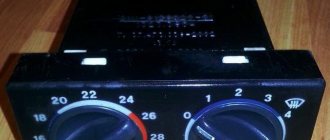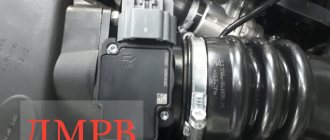What to do if a tubeless wheel flattens on the rim? list of required actions
Post by Murmashi » 26 Nov 2013, 21:39
Can anyone tell me what kind of sealant can be poured into the wheels? They etch along the rim and welding. Just please don’t offer to disassemble and reassemble.
I briefly saw a solution in one of the topics (they mixed something with antifreeze), and tried to find it through a search. not located (((
Post by ROMKA » November 26, 2013, 21:42
Post by Murmashi » 26 Nov 2013, 21:59
Post by lunatik-1 » Nov 26, 2013, 10:04 pm
It works ONLY on a running tire, drawn by gravity and centrifugal force, and at positive temperatures!
What is the anti-gravity way for him to rise from the bottom to the disk?
Post by Murmashi » Nov 26, 2013, 10:36 pm
Post by lunatik-1 » Nov 26, 2013, 11:08 pm
Yes, they stir it so that it freezes later. But this does not cancel Gravity.
I saw this method, a drug addict: - a syringe with a reasonably thin needle - a solution like Moment with something thinning - degreasing - injections, injections, injections
I don't know anything else.
Post by Murmashi » November 27, 2013, 00:19
How long does it take for it to harden and will it be enough to pour it into the wheel, shake it/twist it (including from side to side so that the liquid gets on the rim) and put it against the wall, say for a week. Or do you need to twist it until it hardens?
If a wheel with a longway is placed “against the wall” for a day/week, won’t all the liquid freeze at the bottom point of the wheel?
Post by Vavillio » November 27, 2013, 01:00
Post by lunatik-1 » 27 Nov 2013, 02:26
Yes, it does not freeze, it is a sticky slurry interspersed with fibers that plug micropores around a foreign body in a tubeless tube. It can probably plug cracks, but not a centimeter cut. Sufficient excess pressure is also necessary.
Post by ROMKA » November 27, 2013, 06:48
lunatik wrote: ROMKA wrote: Longway.
It works ONLY on a running tire, drawn by gravity and centrifugal force, and at positive temperatures!
What is the anti-gravity way for him to rise from the bottom to the disk?
Post by lunatik-1 » 27 Nov 2013, 07:33
This is NOT mastic, you can’t “smear it” so that it sticks and dries. The operating principle of Logway is to penetrate into a crack under the influence of excess pressure. Plug the crack with the fibers included in its composition, they are visible to the naked eye, small slivers.
Logway smeared (relatively) on the surface with a brush is completely useless!
Post by makss » 27 Nov 2013, 17:23
Post by Vlas69 » 27 Nov 2013, 20:10
Yo-mayo! I wrote and wrote, everything disappeared. I also encountered the problem of air leakage on the landing sides. For my Blue Boar, I made wheels from aircraft wheels into car castings. Since the size of the landing is not standard, I had to remove the torn layers from the landing. When installing the tires, the beads were generously spilled with bead sealant. Under pressure, the tires fell into place with great difficulty. It took 2-3 hours for the air to escape, disassembling it is not an option, you need a tire service and even a truck service. I found a wheel sealant for agricultural machinery, just for low pressure and low speeds; at low speeds, all the liquid washes not only the treadmill, but also drains onto the sides. A 20 liter canister costs 23 thousand rubles. Then I thought about it and decided to do it this way. I pumped out the air from the wheels with a boat pump, as much as the pump and I could, diluted the side sealant (can be xylene or gasoline) 1:2 and spilled the sides until completely dry, 2 times, each side dried for a day. As a result, the wheels last up to 2 days, but since pumping takes 2 minutes (10 pumps with a boat pump), I think this is not critical. As for liquid sealant, I would pour it into mine to seal cracks and prevent punctures, but what to pour is a question.
Post by Vavillio » 27 Nov 2013, 20:47
What do car owners think about a wheel running down the rim?
- How do you know where your tire is going flat?
“You need to place the tire in water, inflate it well, and look carefully to see if there are any air bubbles.You can use soap suds to smear the entire wheel or use a spray bottle. The bubbling solution will indicate where the air is escaping.
Before starting the process, you should carefully inspect the tire. There may be a nail stuck into the tire, and you won't need to do any manipulation. You also need to look at the nipple and spool. Often they become the cause of deflation of air.”
- My car has a flat tire: what to do.
“If you want to get rid of this problem, then you need to do the following.The tire must be completely empty, that is, all the air must be removed from it.
In a circle, along the junction of the cord and the rim, the tire should be lubricated with soapy liquid, or rather a very thick soapy slurry.
Another answer to the question of how to lubricate the wheel rim to prevent air from leaking is to use a paraffin candle. Usually 3-4 spark plugs are required per tire. You need to bend the cord away from the rim and run a candle along the entire wheel, pressing hard, so that the paraffin intensively crumbles onto the rim. During movement, due to friction, the wax will melt and seal all the places from which air escaped.
Or you can buy special compounds in the store to seal the junction of the rim and tire when deflating.”
- Solving problems with flat tires.
“On older rims, if the rim is damaged, you can apply additional sealant. Experienced drivers also recommend using additional tubes located inside tubeless tires. However, the simplest and most effective way to deal with an old disc with a worn rim that is leaking air is to install a new disc.Often these troubles with slow punctures appear on winter tires whose quality is poor. Spikes that have been subjected to mechanical stress make microscopic holes in the cord. Air is then released through these tiny lesions. Alas, such difficulties cannot be eliminated, even if the studs are replaced or additionally glued. Over time, deflation will be much faster and eventually the driver will have to replace the damaged wheel.
Old metal stamped or alloy wheels can develop rust over time. It appears in places where rubber and metal meet, and causes the wheel to begin to slide down the rim. Troubleshooting consists of the following: dismantle the wheel, remove corrosion, and treat with special means. In this case, we can close the issue with the slow release of air from the wheel.”
- Issues of prevention.
“Car drivers need to buy quality tires and good alloy wheels. In this case, you can avoid problems that arise with tires and protect yourself from a slow puncture. However, if you save on tires and buy cheap Chinese goods, then in a couple of years you will have problems such as rim wear and corrosion.A tire can also deflate when various mechanical damage occurs to the tires themselves. To prevent such troubles, you need to choose the right speed limit. Try not to fly at high speed on bad roads, because this can lead to various bumps and cord breaks on the tires. The discs lose their original shape and destroy the integrity of the wheels. In addition to this, you can end up with suspension repairs, which will cost you quite a lot.”
Damage to the wheel rim
Loss of air from a wheel most often occurs due to wear of the metal structure or incorrectly carried out beading of the wheels. For example, a workshop can save on the use of a special mastic that is used to coat the joints, which eliminates air etching. Therefore, you should not save on the services of tire workshops, entrusting such work exclusively to specialists who work in workshops that offer appropriate guarantees.
On old discs, metal fatigue is already observed, numerous defects appear on the rim, the entire internal structure loses its tightness, so even the use of special mastic will not help prevent air etching. In the future, such microdamages will only increase in size, and accordingly, the wheels lose air faster, resulting in the need for more frequent repairs or even changing the wheel.
Car owners often turn a blind eye to such air etching; it is easier for them to pump up the wheel once a week than to carry out expensive repairs or replace alloy wheels. However, in reality, incorrectly selected tire pressure negatively affects the vehicle's handling characteristics, causes increased tire wear, and also consumes more fuel, which increases the car owner's expenses. That is why it is still not recommended to operate a car on such old damaged rims, from which air leaks.
Types of nipples
Such parts are produced not only for cars; factories also produce valves for:
- ordinary bicycles (Presta, also called French nipple);
- sports bikes (Woods).
The nipple for cars is considered the most universal and the most popular is Schrader. This device is wider than the model for sports bikes, but can be suitable for both regular bikes and mountain bikes. The part also has some disadvantages associated with operation.
On a car, the cap must always be screwed onto the clamp, otherwise dirt will clog it and further use will be impossible.
Another disadvantage is that a machine nipple holds pressure in the wheel worse than a bicycle nipple. But at the same time, the bike clamp is very fragile and can be easily broken if the tire is inflated carelessly. Most often, the head breaks off and the part becomes unusable.
The clamp model for sports bikes has some advantages over other types. A cap is already built into its design, but in this case, after inflating, it must be tightly tightened, as air leakage may occur.
The Presta tube nipple is easier to use as it can be used to inflate any tire. This is because there is no spring in the valve, and a tubeless valve does not require a very large wheel rim diameter.
On a note. The nipples can be short or long, so when inflating the tire you may need an additional adapter. This way you can lengthen the nipple. You just need to tighten the adapter piece well, otherwise air will leak when pumping.
Sometimes situations occur in which the thread of the wheel clamp is broken. Some car enthusiasts believe that this problem can be corrected with the help of taps. But this is not so, because the part has a far from unusual valve thread, which is equal to the following dimensions:
- outer diameter – 7.7 x 0.794 mm;
- internal hole – 5.3 x 0.7 mm.
Note! A standard thread cutting tool is not suitable in this case. Automotive nipple with thread
Automotive nipple with thread
The wheel is running flat on the rim, what should I do?
This type of problem is relevant for tubeless tires and in places where the tire cord does not fit tightly to the car wheel, air escapes. For tubed wheels this problem is not relevant; they only deflate when punctured.
Some may wonder why everyone switched to tubeless tires, but they simply have more advantages over all other types
- Holds pressure longer
- They heat up less during long driving, since there is no friction between the tube and the tire. Without the use of a tube, the wheel is much lighter
- The puncture can be repaired right on the spot using a repair harness, or you can screw a self-tapping screw into the puncture site and drive to the nearest service station, which cannot be done on a tube tire.
- A puncture in a tubeless tire can be repaired many times faster than on a tube tire, since there is no need to put a patch on it, smear it with glue or wait for a long time to vulcanize at high temperatures. And in general, they are simply more reliable
Tube or tubeless tires?
Most modern cars are equipped with tubeless tires. In the event of a puncture, unlike tube tires, they allow you to maintain pressure in the wheel for some time, which is very important from a safety point of view. There are situations when the owner of tubeless wheels drives with a nail in the tire for several months before the puncture makes itself felt. Of course, we are not talking about significant damage. In turn, the tube wheel immediately deflates when punctured. Just imagine what this can mean at speed. Therefore, experts strongly recommend that everyone who still has tube tires abandon them.
What should be in the trunk
Be sure to bring a pump and repair kit with you! A tire can go flat at the most inopportune moment, so it’s better to be prepared for it. Of course, no one canceled the spare tire either. If it happens that you have neither a spare wheel nor tools, a simple self-tapping screw will come to the rescue. It must be screwed tightly into the puncture site. With a self-tapping screw, you will most likely be able to get to a tire shop. You can always find a self-tapping screw in a car; most importantly, do not forget to return it to its place later. Thus, the minimum tool needed to repair a tire after a puncture is a screwdriver. But it’s better not to mess with such methods.
The tips listed above for quickly repairing a wheel yourself are only relevant in case of a puncture. In case of a cut or other problems, only a spare tire can be a salvation. In the garage, you can already try to seal the tire with special patches, similar to those used when a tire on a bicycle or motorcycle goes flat, but it is better to turn to professionals.
Call a mobile tire service
Using the services of mobile tire fitting, you can count on help:
- tire or wheel repair;
- elimination of punctures and side cuts of any complexity
- installing a spare wheel instead of a damaged wheel;
- elimination of hernias and cones;
- pumping and balancing;
- editing disks;
- restoration of disks by welding in argon;
- removing wheel locks
If there is no spare tire available or repairing tires on site is impossible, mobile tire service employees can offer other ways to resolve the situation. For example, buy and install a new wheel. Or repair the tire in a workshop and deliver it back to the client.
My car has a flat tire, what should I do?
In order to overcome this disease, do the following:
- Bleed all the air from your car tire
- When bending the place where the cord meets the disk, lubricate this place with thick soapy water from laundry soap, not even water, but like a soap slurry, it should be so thick
- The second option is to lubricate it with paraffin candles, on average 3-4 candles will be needed for one tire, bend the cord and, pressing well on the candle, apply it along the entire diameter of the cord; paraffin should be poured generously onto the rim. When driving, the wax will begin to melt due to friction and will drown out the places where the air has been poisoned.
- You can also purchase special lubricants and sprays in the store to eliminate flat tires.
Well, if it’s drained and there’s no pump, then the only way out is to install a spare wheel or ask for help from passing cars, alternatively call a tow truck or call a friend. If you are completely stuck in the middle of nowhere where only one person a year passes by, then you can try to ride on the rim, yes, the tires will be ruined, but you will return, so to speak, to crowded places, where you can already solve this problem.
What to do if a tire goes flat?
Video: The tire goes flat on the rim - the old-fashioned way to fix it
The solution to the problem with a deflated ramp on the road depends on the equipment of the car. So, while driving, loud “squelching” sounds appeared. These are clear signals that the tire is flat. If the air has escaped from the front wheel, then the car's handling will also deteriorate greatly - the car will begin to pull strongly to the side. In this case, you should immediately stop moving smoothly and carefully. The simplest solution is to use a spare tire. But for this, the car must have a spare wheel, a wheel wrench and a jack. This is a minimum set; it is also advisable to keep a warning triangle, wheel chocks, a pump or a compressor in the car. And then everything is simple:
- We tear off the wheel bolts.
- We install the wheel chocks, engage the gearbox and apply the handbrake.
- We jack up the wheel (while making sure that the jack does not warp during lifting, and that the car does not move to the side).
- We install a spare tire instead of the damaged one.
- Screw the wheel bolts until they stop (but do not tighten them).
- We remove the car from the jack.
- Tighten the wheel bolts.
Before starting work, be sure to check what kind of spare tire is available. The fact is that dokatki should not be installed on the steered axle. Therefore, if you have a re-roller, if the front slope is broken, you will have to tinker - remove the full-size wheel from the rear axle and put a re-roller in its place, and replace the broken one with a normal one. At the same time, while driving, you should maintain a speed limit of no more than 60 km/h.
Another solution to the problem is to use a “first aid kit” to repair tubeless tires. But you need to buy it in advance and carry it in the car. This first aid kit includes tools and means to eliminate punctures and cuts.
But when using a first aid kit, it is important to follow the technology for sealing a puncture. If there is no spare tire or first aid kit, but there is a pump or compressor, then inflate the tire and set the deflation speed. If the air poisoning is not strong, then on such a wheel you can get to the nearest tire shop, periodically stopping and pumping up the wheel
It’s worse if there are no tools or equipment, and the ramp descends very quickly. In this case, you will have to continue driving on such a wheel. But at the same time, you should move at the minimum possible speed, with the emergency lights on, and preferably on the side of the road.
Video: How to extend the life of a tubeless release camera
https://youtube.com/watch?v=_M3jrV2Aikk
You can drive on a flat tire to the repair site, but after such a trip the tire will no longer be able to be repaired. In addition, traveling under such conditions will create serious stress on the transmission elements, which will shorten their service life.
Therefore, it is still better to carry a set of tools, a “first aid kit” for tires and a spare tire in your car. With such equipment, a breakdown will not take you by surprise.
Why does the tire go flat?
Let's talk about the main reasons why a tire goes flat.
You've probably thought about why your car tires go flat, and you probably know that a puncture is by no means the only cause of this problem. In general, it is not very often that tires end up flat due to punctures. There are a lot of options, but the first place you can put the deformation of the wheel rim.
A straight rim is essential for tubeless tires. If its edges are deformed, the tire will not be able to fit tightly to the disk, accordingly, air will escape from it, and you may soon notice a completely or partially flat tire.
Most often, disc deformation occurs with a strong impact, which you are unlikely to ignore. Depending on the force of the impact and the degree of deformation of the disc, air may be released from the wheel slowly, but it can also be very fast. Keep in mind that it is not the outer part of the rim that can be deformed, but the inner one, which is very difficult to see during a visual inspection. The best solution to the problem would be to contact the nearest tire repair shop, whose employees will remove the wheel and roll the rim. If the blow was not very strong, and you have a “stamping”, then you can straighten the bent rim with a hammer.
The second most common reason why a car tire goes flat without a puncture is a malfunction of the nipple. If it is clogged or damaged, air will begin to escape from the tire, but the speed at which this will happen is influenced by various factors, including the load on the car, its speed, ambient temperature, etc.
Situations are possible when unscrupulous tire workers, when beading a wheel, throw the nipple into the general pile, and then take the one that came across first, but it may turn out to be faulty. As a result, overflated tires may begin to lose air.
You can check whether the nipple is working in a well-known way: lubricate the nipple with a finger moistened with saliva and observe whether air bubbles appear. For this purpose, you can also apply a soap solution to it or dip the wheel in water: if air escapes through the nipple, bubbles will appear on the surface.
In addition, in some cases, even if the nipple is in good working order, the wheel may still deflate - air is released at the place where the nipple connects to the disk. If there are even minor cracks in the nipple seal, you may be constantly faced with the problem of flat tires. This issue is resolved by replacing the nipple.
Another reason why a tubeless tire goes flat is a puncture or cut in the tire. Such tire defects invariably lead to air bleed. It is unlikely that it will be possible to determine the integrity of the tire by eye; the tire will need to be removed and immersed entirely in water. However, you can see the large cut on the side with the naked eye. But it will be difficult to see damage in the tread area - the wheel will need to be removed and lowered into water or special tools must be used.
Also, the reason why a flat tire can be caused by old damaged wheels covered with rust. Due to rust or sand getting on the rim, the disc will no longer fit tightly to the tire, and accordingly, air will escape from the tire. The tire will deflate, although not as quickly as with a cut or puncture.
To solve the problem, you need to remove the wheel, free the disc from the tire, clean (or paint) the rim, treat the joint with a special lubricant (like silicone), and then put the rubber on the disc. If this was the only reason for bleeding air, then after such treatment you will forget about the trouble that happened.
Surely you know why tires go flat in winter. Despite the fact that winter tires are initially designed to withstand negative temperatures, they are still susceptible to loss of elasticity in cold weather, which means that if there are even small defects on the disk where it contacts the tire, the wheels will deflate.
Changes in tire pressure in winter can be caused by temperature changes outside. On a frosty morning, the tire pressure may be one way, and in the evening or during a thaw, it may be different. When the car moves, the tires heat up significantly, and accordingly, the pressure in them increases.
How to find and stop slow tire leaks?
If careful inspection of the flat tire does not reveal a puncture, the leak may likely be caused by a pinhole in the tread or sidewall. However, the problem may not be with the tire. The air valve stem may be leaking and will need to be replaced, otherwise the tire bead (where it meets the wheel) may be pressed tightly against the rim (a common problem in areas where road salt is used, which can corrode the metal surface).
Soap and water or water alone can help find the source of the leak. Mix liquid soap and water in a spray bottle. Spray all parts of the tire—tread, sidewalls, valve stem and bore (with the cap off), and along both sides of the rim—until you find the spot where the bubbles are. This is where the air comes out. This is easier to do with the wheel removed, but you might be able to find the leak without removing the wheel, especially at the front where turning the steering wheel exposes the inner sidewall somewhat.
Another method is to remove the wheel and immerse it in a bath of water. Bubbles form at the leak site. If the tub is not large enough to wet the entire tire, do the procedure several times.
Small punctures in the tread can be repaired. Large punctures may not, and minor damage to the sidewalls (where the tread and sidewall meet) will usually require tire replacement. Leaks and valve stems (the tiny valve itself inside the tube) can also be replaced.
If the leak occurs because the wheel is not completely seated against the tire, sometimes removing the tire and applying bead sealant can stop the leak.
Possible solutions for leaks originating from the wheel seat are to remove the tire, clean off the corrosion, and apply ball sealant before remounting the tire. Some mechanics also suggest inflating the tire with nitrogen instead of air because its molecules are larger than oxygen, potentially making them less able to slip through the smallest holes. This may be the answer since nitrogen contains less moisture - this will prevent rust if the wheel is made of steel.
When a wheel is leaking air, the question of whether it can be repaired or needs to be replaced will be decided. For example, pitting on a wheel can make the metal porous and allow air to leak out. This probably justifies the replacement.
Source
Repairing a tire using a harness
In addition to the tire inflation agent, it is advisable to put a tire repair kit in the trunk of your car. It will save you in case of a tire puncture. If you have such a “tire first aid kit” and the proper skills, it will take less than half an hour to repair a tire. The set consists of the following elements:
- An awl with a cut eye.
- Spiral shaped awl.
- Special tourniquet.
- Glue.
The repair operation is performed in the following sequence:
- The tire is inflated and the puncture location is determined. You need to inflate the tire not only to identify the problem area, but also for ease of repair.
- Now you need to carefully screw the spiral awl into the hole. It is necessary to develop a hole and prepare it for a tourniquet. To widen the hole, you need to insert and remove the awl several times.
- When the hole is ready, take an awl with an eye. A tourniquet up to 4 cm long is inserted into the eyelet so that the awl is in the middle.
- The awl with the tourniquet is carefully inserted into the hole until you feel that the bend of the tourniquet has reached the inner edge of the tire.
- All that remains is to sharply pull out the tool and cut off the excess pieces of the harness.
When the front wheel is punctured, this repair can be carried out without removing it. Just turn the steering wheel to the side and open access to the tire. But if the rear tire is flat, you still have to remove it. If after this operation the wheel maintains pressure, you can safely drive it to the service station. However, to be honest, most drivers have been driving such a wheel for several years and have no problems. A similar procedure can be done at a tire shop if the driver does not have time for more reliable repairs.
Features of the drugs
The most unpleasant damage to a wheel is a side cut or hole of one and a half centimeters or more. In this case, liquid agents are a priori powerless. But flagella often help even with severe cuts. Of course, driving with a side cut even after repair is dangerous: drag yourself to the garage and urgently change the tire!
Sealants “work” only when the tire is damaged in the tread area. Air leaks through the nipple valves can only be eliminated by means No. 4.
Most liquid products contain water. Therefore, if you catch a nail in the cold, you will first have to warm up the product, for example, behind the bosom or near the heater deflectors. By the way, aerosols are also afraid of high temperatures - so do not leave them in the bright sun in the car - place them in the trunk of the car.
After using the medications, you should drive a couple of kilometers at low speed. The instructions say that in this case, the sealing fluid will spread evenly inside the tire without disturbing the balance of the wheel. This is wrong. A quarter of a century ago, our magazine proved in practice that all attempts to self-balance wheels with liquids poured inside end the same way: the tire has to be dismantled, cleaned from the inside and balanced in the traditional way. Keep this in mind when you pour sealant inside.
When filling the flat tire valve, it should be located below its center. By the way, the larger the size of the wheels, the more liquid sealant will be required: one bottle may not be enough to repair a puncture.
We recommend regularly monitoring the tire pressure for several days after repair. If it decreases, contact a workshop.
Why does a car tire go flat? Possible reasons
Having discovered a flat tire, a motorist must determine the cause of the leak. After identifying damage or defects in the pneumatic tire, you can proceed to its repair or replacement.
The main sources of trouble are cuts and punctures of tires. This also includes deformations of the wheel rim, a faulty spool or nipple valve, and even driving a car with insufficiently inflated wheels.
Puncture in the tread area
At the top of the list of reasons for flat tires is a tire puncture. It usually appears as a result of hitting sharp and not too thick objects (nails, screws, wire with a diameter of up to 5 mm) and can be repaired on your own. To do this, the driver only needs to have a special tire repair kit and have the necessary minimum technical skills.
If the object that has punctured the tire is significant, it will not be possible to do without contacting a tire service to repair the tires. For such repairs, the tire will have to be removed from the rim and the puncture site sealed from the inside with a special rubber “fungus”. This will extend the life of the tire by several years from the date of repair.
Wheel cut
A cut tire is a common cause of flat tires on tubeless tires and is also the most difficult to repair. Moreover, it can be located not only on the running part of the tread, where the rubber is thicker and denser, but also on the side. Side cut often occurs when the tire comes into contact with the edges of the tracks, curbs, metal reinforcement and other sharp protrusions, presenting a serious problem.
If the damage does not affect the tire frame (cord), the wheel usually does not flatten, so it can be repaired at the end of the trip or at a service center. A deep side cut leads to a flat tire, and sometimes to its final failure. Tires with long transverse cuts, resulting in rupture of the cord threads, cannot be repaired for safety reasons and are replaced with new ones. Repair of side cuts must be carried out by a specialist, using high-quality materials that ensure the strength of the tire sidewall and its tightness.
The wheel descends along the disk
If the driver discovers that the car has a flat tire due to air etching along the rim of the wheel, then the cause is usually a loose fit of the tire to the surface of this element. The driver may encounter this situation after the car falls into a hole and the disc becomes jammed. In some cases, the wheel goes down on the disk when corrosion appears on the rim. The rusted areas are destroyed, the paint peels off from the surface and leaks appear that allow air to pass through.
To eliminate deformation of steel disks, special rolling equipment is used. Repairing alloy wheels is more difficult - even after removing irregularities and dents, microcracks remain on them, negatively affecting the strength of the element. Moreover, repairing a cast part is quite expensive. In case of severe damage, it is safer and more reliable to replace the disk.
If a tubeless wheel has slipped along the rim due to corrosion, then the disk flange must be cleaned of rust and peeling paint. And when installing rubber on a disk, cover the disk shelf with a special bead sealant to eliminate leaks. In severe cases, it makes sense to clean, prime and paint the entire set of disks.
Problems with spool or nipple
Among the reasons why tires go flat, it is worth highlighting two more:
- nipple valve malfunction;
- problems with the spool (the valve that is located inside the nipple)
You can make sure that it is the nipple that is leaking by placing a finger moistened with saliva (or water) to its inlet hole. If the fluid bubbles, the tire will go flat for this very reason. To stop the leak, you will have to glue the seat of the nipple valve or replace the faulty spool and re-pump air.
Driving on flat tires
Quite often, drivers who drive with flat tires have to deal with air leaks. Such trips lead to the appearance of cracks on the rubber - unnoticeable at first, but gradually increasing. If the issue is not resolved in time, the tires will have to be changed.
To avoid the problem of flat tires due to insufficient air pressure, your tires should be checked periodically. Regular checks are required for fully serviceable and recently purchased tires, and even more so for old ones. Even if not a single tire is flat, the driver should carry a compressor with him to inflate them.
How to avoid the problem
Many troubles can be prevented by taking appropriate preventive measures:
- After each long trip, inspect car tires (regardless of whether the tire is tubeless or with a tube) for air leakage and the presence of foreign objects;
- perform a weekly check, monitoring not only whether the tire is flat or not, but also the pressure level - if necessary, the wheels are inflated using a 12v compressor;
- avoid dangerous areas on the road, driving through which can lead to tire damage;
- If you can’t get around an obstacle and the driver doesn’t have time to brake, you shouldn’t turn sharply - the strength of the central part of the tread is higher than the side
When traveling long distances, it is worth carrying with you a special kit that allows you to repair tires in the field, and a spare tire. It is advisable to be prepared for the fact that a tire may go flat at the most inopportune moment. And for cases where it was not possible to solve the problem on your own, the motorist should have the telephone number of the mobile tire fitting service Pit-Stop24 (812) 209-03-04
2 tires were punctured, in particular on the right side of the car. What to do then?
How long can you drive on a flat tire?
The main thing is to drive carefully and not quickly. This comes with risks because you can damage the bearings and some of the car's suspension components. And before that, the wheel rim itself, and if you have branded tires and rims (usually expensive), then driving on a broken wheel is very unsafe. It is possible for the wheel to be seriously damaged, which will lead to complete replacement.
There is another solution to the problem in the given situation. You can ask drivers passing nearby to borrow a spare tire or take you to a repair site. Of course, you will need to pay the person for the service, however, this is the best option in the provided episode.
Thus, if you go to a tire shop that is located nearby, you can get there individually. When you are far from civilization and there is no car service nearby, you need to fill the wheel with scraps, hay or grass and drive to the repair site.
Nevertheless, in addition to everything else, in the car trunk you need to have a kit for repairing a wheel; such kits are available for free sale in hypermarkets, respectively, in automobile departments.
Vote, did you like the article?
How to keep a car on the road in case of a sudden breakdown
There are times when a tire goes flat on the road for no reason at all. What should you do to stop your car safely? Let's look at it step by step:
- First of all, it is worth noting a simple fact - the slower a car drives, the greater the likelihood that its passengers will remain unharmed in the event of a sharp flat tire. Therefore, when breaking the speed limit, remember this.
- If a tire suddenly goes flat (you will certainly feel it), do not rush to press the brake to the floor. The subconscious will force you to slow down in any emergency situation, but this is the worst thing you can do in this case. If you brake, the car will pull even more.
- If you have cruise control on, turn it off as quickly as possible.
- Do everything to keep the car on a straight path. If it pulls to the side, turn the steering wheel in the opposite direction. But don't overdo it, otherwise it will have the opposite effect.
- Let the car drive itself to the stopping place. The car will brake on its own due to a flat tire. You can help her by lightly pressing the brake. In this case, it is best to brake using the transmission. If there is no shoulder nearby, do not stop on the road; it is better to drive some distance. Be sure to turn on your hazard lights so other participants are aware of your problem and be careful.




